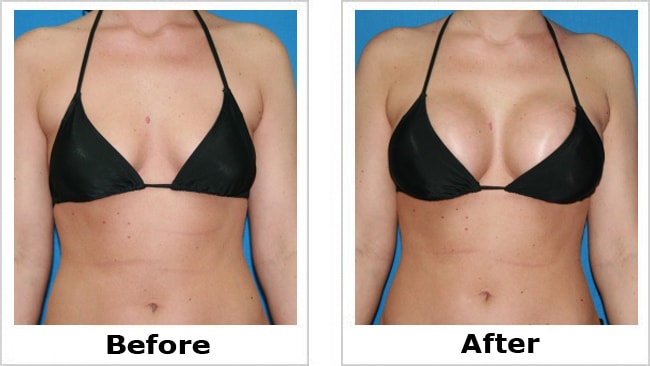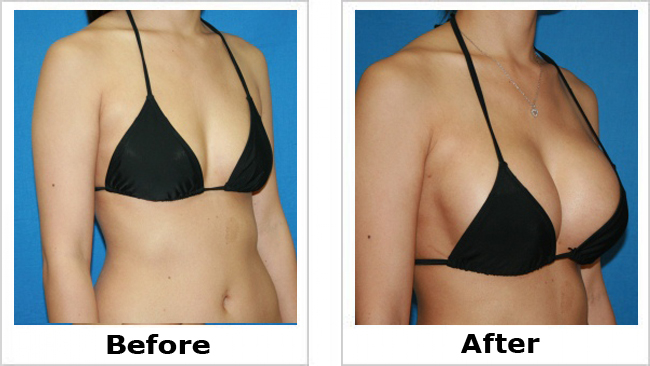Everything you need to know about Breast Enlargement Surgery
Breast enlargement is surgery to make the breasts bigger and improve their shape. This surgery may also be called breast augmentation or augmentation mammoplasty. During breast enlargement, the surgeon places an implant in the breast. An implant is a soft silicone shell filled with silicone gel or saline.
To position the implant, the surgeon makes a cut in the bottom crease of the breast, in the armpit, or along the lower edge of the areola. The surgeon carefully adjusts the implant to the correct shape and position. Then the incision is closed with stitches.
The implant may be placed under the breast tissue or under the chest muscle beneath the breast. Some doctors think that putting the implant under the chest muscle lowers the risk for a problem called capsular contracture. This placement may also interfere less with mammography.

A breast lift may be done at the same time as a breast enlargement. This surgery can raise sagging breasts as well as the nipple and areola. For a breast lift, the surgeon removes excess skin from the bottom of the breast and around the areola. The remaining skin is then brought together. This tightens and raises the breast.
A breast lift requires a larger incision than a breast enlargement alone. The incision may go from the areola to the crease below the breast.
Breast enlargements and lifts are usually done in a hospital or surgery center. You will not need to stay overnight in the hospital unless problems occur during surgery. You will probably get medicine to make you sleep during the surgery. Or you might be awake and get medicine that makes the area numb.
What to Expect After Surgery
You will have gauze over the incisions. Your breasts will be wrapped in an elastic bandage or supported by a special bra. The stitches may be removed in 7 to 10 days.
You may have some swelling, bruising, and soreness in your breasts for several days after the surgery. Some women also have a burning feeling in their nipples right after surgery. Swelling and bruising may last for several weeks.
- Wearing a support bra 24 hours a day can help reduce swelling while your breasts heal.
- Your doctor may give you medicine to help with the pain.
You will probably be able to return to most of your normal activities within a few days. You will need to avoid heavy lifting and strenuous exercise until your doctor says it is safe.

You will have scars after breast enlargement surgery. But they are usually in areas that are not easily seen, such as the crease under the breast or the armpit. Scars usually fade after a few months. If you also have a breast lift, you will have larger scars that are easier to see.
Why is it Done?
The surgery is done to make the breasts bigger and to enhance their shape. You may decide to get breast implants:
- If you think your breasts are too small. What is “too small” is a personal opinion. If you are happy with the size of your breasts, they are not too small.
- To restore the size or shape of the breasts after pregnancy or losing a lot of weight.
- To make the breasts match better. In many women, one breast may be larger or sit higher than the other breast.
How Well it Works
Breast enlargement surgery can increase your breast size by one or more bra cup sizes. It can also help your breasts match better in shape and size.
Most women who get breast implants are satisfied with the results. You are likely to be happy with the results if you are realistic about what to expect from the surgery. The surgeon can show you pictures of other women who got implants. This can give you a good idea about what to expect.
Risks
Breast implants may make it harder for a mammogram to detect breast cancer.

Other risks include:
- Capsular contracture. This occurs when scar tissue around the implant hardens and begins to squeeze the implant. Surgery may be needed to remove the scar tissue or replace the implant.
- Loss of feeling in the nipples or breast. Often this doesn’t last very long, but sometimes it is permanent.
- An unwanted change in the size or shape of the breasts after surgery.
- Changes in the implant. Over time, the implant may harden, develop ripples, or change shape or position. If this happens, you may need surgery to remove the implant.
What to Think About
Most women who get breast implants will need at least on more implant surgery in their lives. Implants don’t last forever. They may need to be removed or replaced if they leak, rupture, change shape, or develop other problems.
Newer silicone implants have get in them instead of liquid. These types of implants don’t leak if they are punctured or cut. About 1 out of 100 saline implants ruptures each year.


